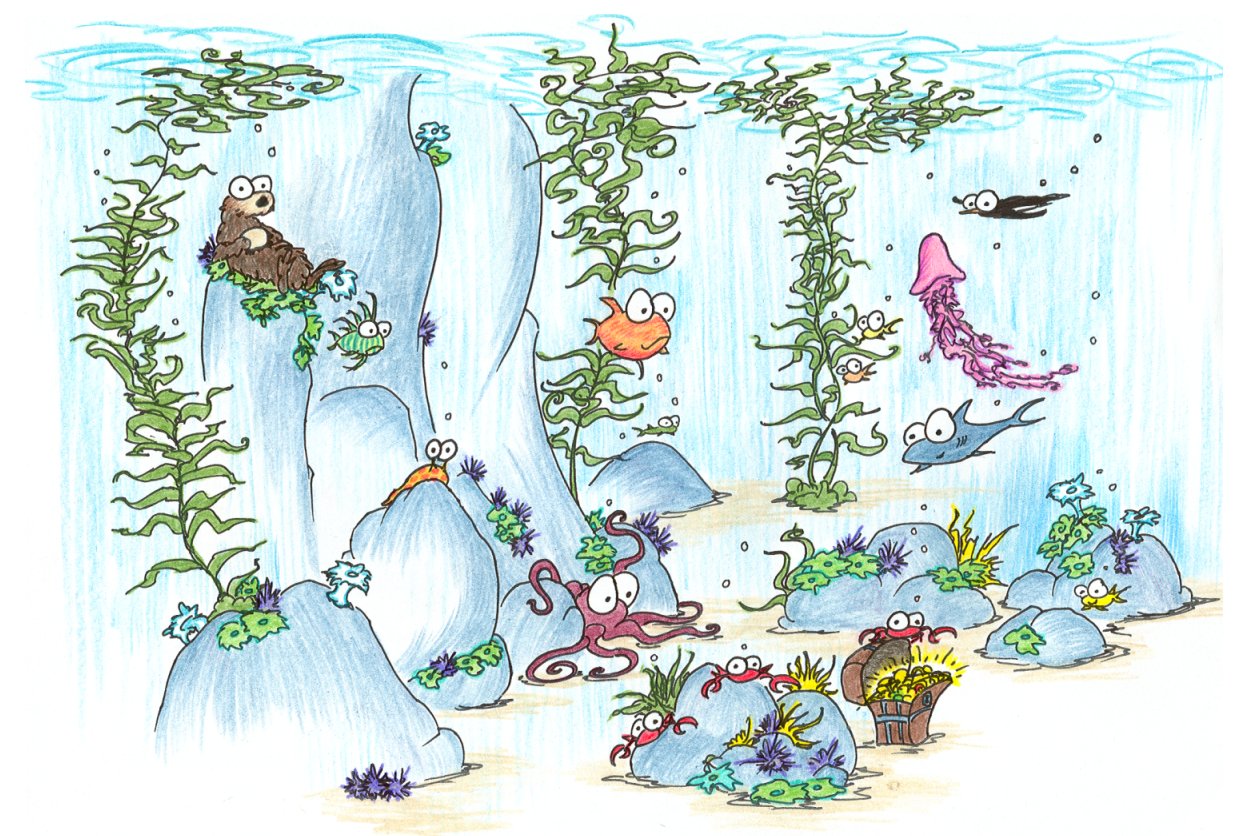Students have been learning all the different biomes that exist in the oceans. Most people have heard of coral reefs and think about the beach, but there are actually many different biomes in the ocean. On the East Coast right here in Virginia, we can find salt marshes, sea grasses, sandy beaches, and maritime forests. In Florida you can find mangroves (trees that grow in salt water) and coral reefs. On the west coast, rocky coasts and kelp forests are the two dominant biomes.
 Along some coasts you can find rocky coasts, sandy beaches, salt marshes, mangroves, sea grass beds, kelp forests, and fouling communities.
Kelp forests are dominated by kelp that can grow to 300 feet tall. The kelp is held near the surface by lots of air bladders. Kelp forests are important because they provide a lot of substrate and habitat for organisms to live, hide and eat.
Along some coasts you can find rocky coasts, sandy beaches, salt marshes, mangroves, sea grass beds, kelp forests, and fouling communities.
Kelp forests are dominated by kelp that can grow to 300 feet tall. The kelp is held near the surface by lots of air bladders. Kelp forests are important because they provide a lot of substrate and habitat for organisms to live, hide and eat.We also discussed sea grass beds. Sea grass is super-important for stabilizing the substrate and holding the sand down. This promotes water clarity and decreases turbidity. Nothing eats sea grass when it is alive except for manatees. Everything else eats it after the bacteria have decomposed it a bit.
Salt Marshes are one of the most productive ecosystems, but nothing eats the salt marsh grass when its alive... once the anaerobic bacteria break it down into black mush, then other organisms eat it.
There is a lot of information to learn this unit. The Unit 3 Test is one of the hardest of the year.




No comments:
Post a Comment